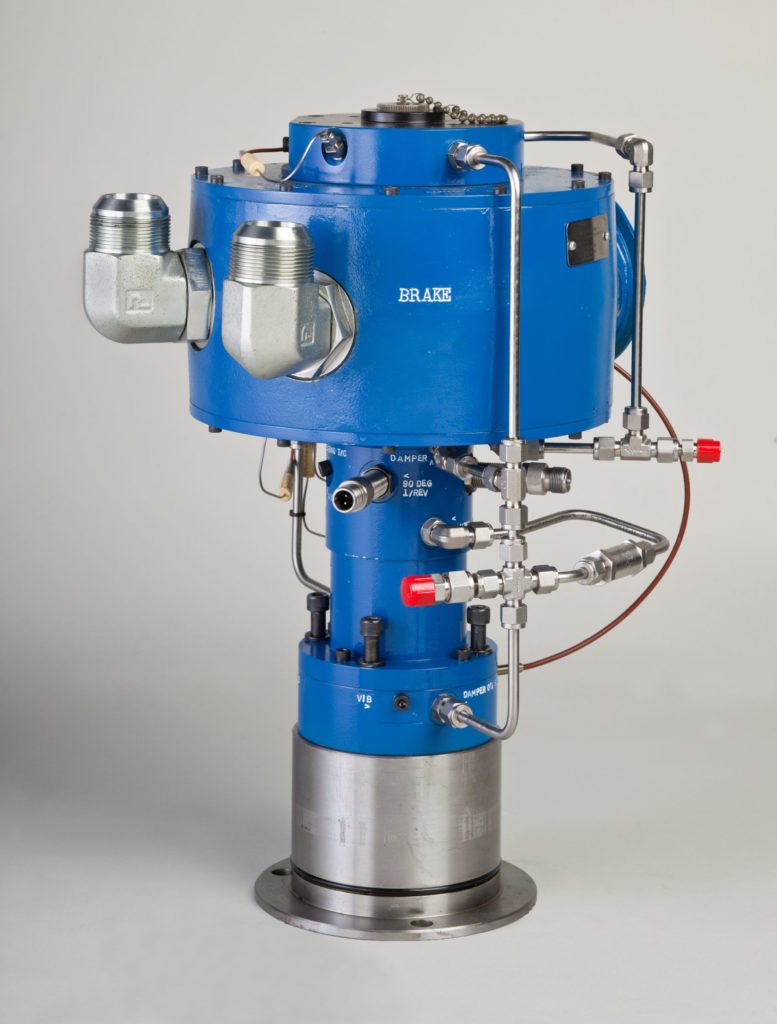Drive Systems
The Test Devices line of Air Turbine Drives produces high power at high speed, using standard shop air as the power source. Our Air Turbine Drives are the only drives that provide the combination of high power and high speed often necessary for test drives.
To create such high power, Test Devices Air Turbine Drives consume large quantities of air. As a result they require a large air compressor and their operating cost varies directly with the customer’s cost to produce sufficient compressed air.
The innovative construction of Test Devices Air Turbine Drives enables a flexible range of configurations. By changing rotor diameter and flow nozzle size, for example, it is possible to supply a wide variety of speed and power capabilities.
600 Series Turbines
The 600 Series turbines are designed for low cost and high reliability. While designed as spin pit drives, they also find applications on special test machines where their small size and mechanical simplicity outweigh their performance limitations.Test Devices uses the 600 Series turbines for proof testing, where reliability and moderate cost are more important than short cycle time. The 600 Series turbines have similar cycle time to industry standard turbines but are substantially more reliable because of Test Devices’ superior damper and spindle system.
Figure 1 shows a 602 turbine. It is shown with its axis oriented vertically, but it will operate in any orientation.
700 Series Turbines
The 700 Series turbines are the most powerful and efficient compressed air drives available for high-speed applications. They are designed to provide the shortest possible cycle times in Low Cycle Fatigue (LCF) testing. These turbines have two separate rotors on a common shaft, most commonly mounted in opposite directions so each can provide torque in the opposite direction from the other. In this configuration, one rotor provides acceleration and the other braking.Although the two rotors are normally mounted in opposition, it is possible to mount both in the same direction to double the drive power. This can be useful for test drive applications where braking is not necessary.
The 700 series turbine damper assembly includes a thrust bearing and spindle connection. The turbine section can be removed completely, leaving the test article fully supported in the spin pit. This design removes the thrust loads from the rotor bearings and increases the reliability of the rotor bearings in very long cyclic applications.
Turbine Performance Data
Test Devices uses a model number system to indicate the basic performance numbers of the turbine. The digit following the series number indicates rotor diameter, so a 706 is a 700 Series turbine with a 6″ rotor tip diameter. The dash number following indicates the flow capacity of the nozzle, so a 706-45 has a drive nozzle whose total cross section is 0.45 square inches. A 706-68 has a 50% larger nozzle, at 0.68 square inches.
The entire Test Devices Air Turbine family is based on the 706-45, and all performance data are scaled from that model.
Model 706-45 Performance Data
| Maxium Operating Speed | 40,000 rpm |
| Aerodynamic Design Speed | 26,000 rpm |
| Supply Pressure | 90 psig |
| Airflow at 90 psig | 772 scfm |
| Drive Torque at Zero Speed | 251 in-lb |
| Drive Torque at Design Speed | 125.5 in-lb |
| Brake Torque at Zero Speed | 251 in-lb |
| Brake Torque at Design Speed | 376.5 in-lb |



